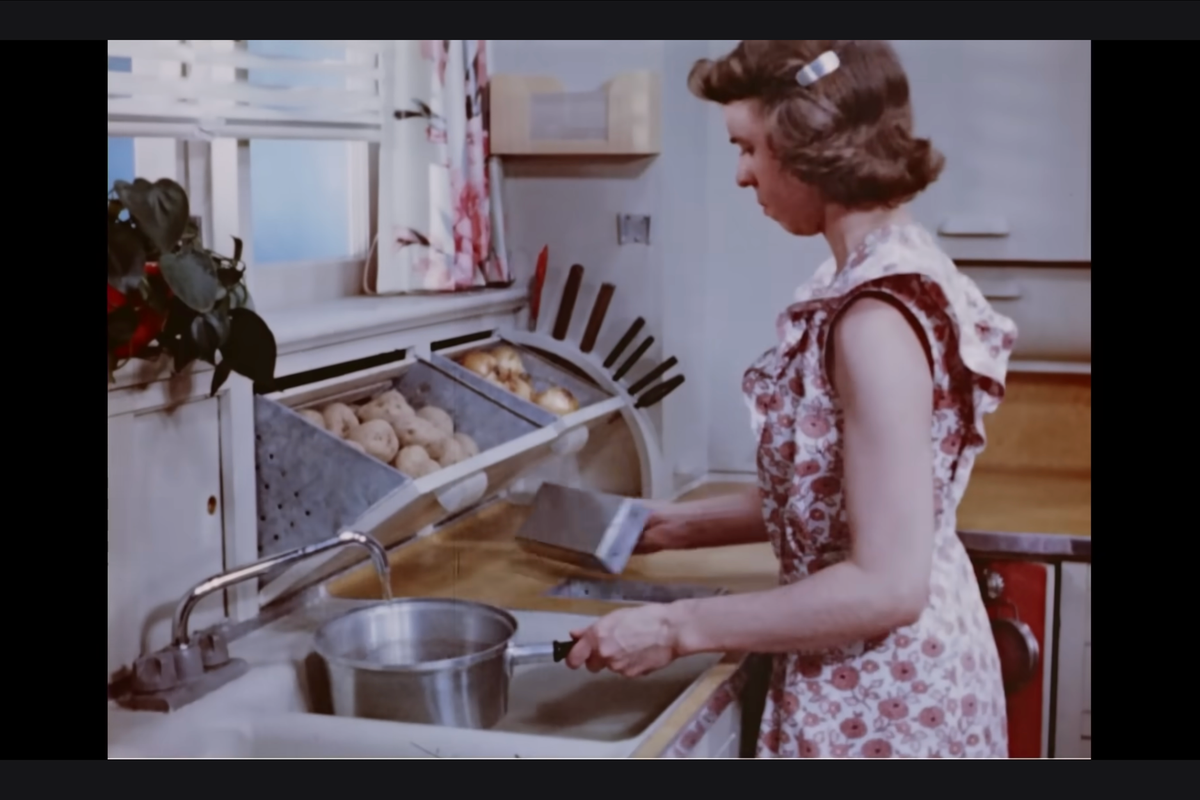Why do your favorite cleaners smell so awesome? It’s science! (Mostly.)
Would a rose by any other name really smell so sweet?
Smell may be the most undervalued of all of the senses — but it shouldn't be.
A McCann Worldgroup study even found that some millennials rank their sense of smell below their phone and laptop in terms of importance. But we actually pay attention to smells a lot more than you may realize, especially when choosing items that go in our homes.
Consumer data shows that we buy A LOT of scented cleaning products. In a 2014 study, a polling company found that 40% of American consumers considered whether a dishwashing detergent had "a pleasant fragrance" when buying it.
And it makes sense — our olfactory cells feed information to our brains about things we might not be able to see. According to some doctors and researchers, what we smell may even directly affect our moods and our minds.
GIF from "Broad City."
Next time you're picking up a new cleaning product, here's what three of the most common scents mean to your brain — and one scent you won't find in the cleaning aisle.
1. For our noses, lemon-iness is next to cleanliness.
Image by iStock.
Even on their own, lemons are a popular tool for housecleaning. The juice of this lovely citrus has astringent properties for cleaning, and its oil is a powerful moisturizing wood cleaner and polish. Plus, it smells absolutely divine!
In aromatherapy, lemon oil is called the "rational" oil since it is believed to aid in the decision-making process. A study of lemon balm found that it may help improve mood and memory.
2. Lavender is loved for its calming powers (even when it doesn't really smell like lavender).
Image by iStock.
Like vanilla, lavender has become a very popular scent for cleaning products. Extracted from the flowers of the lavender bush, this gentle scent is flowery, woodsy, and slightly sweet.
When it comes to its use in cleaning products, you might not want to believe your nose. According to a scent specialist interviewed by the Wall Street Journal, many of the supposedly "lavender-scented" products on shelves today don't really smell like it. Since some consumers don't like the smell of lavender by itself — but really like the idea of things smelling like it — the products may be scented with things associated with the flowering shrub, like fresh fruit, vanilla, florals, and wood.
3. You don't need to speak the language of flowers to understand their scent-sual benefits.
Image by iStock.
There's a reason so many lifestyle gurus recommend keeping a bouquet of fresh flowers in the home at all times — they really do make things feel special. One of the most popular scents in the world, rose is lauded in the aromatherapy world for its many health benefits. Devotees say the scent of roses can improve moods, boost libido, and improve circulation, and rose oil can do double duty as an astringent and antiseptic. One study by The Smell and Taste Treatment and Research Foundation even found that the presence of a floral aroma increased speed on a memory test.
4. One scent you won't find in cleaning products, even though you probably love it? Chocolate.
Image by iStock.
Chocolate is one of the most delicious and recognizable smells. But despite all its enticing qualities, it's unlikely you'll find it in cleaning products anytime soon.
Products that smell like cooked food may get confused with actual cooking smells, and products that smell too sugary can make consumers think of sticky fingers — the last thing you want associated with a cleaning product.
When it comes to our happiness, pleasing scents can pack a powerful punch. But not all fragrances are made of safe and healthy chemicals.
For the most part, I don't mind being emotionally manipulated by nice-smelling cleaning products because it really does make the chore of tidying up feel less like one. But, at the same time, I want to know that the chemicals that make my house smell amazing aren't having adverse effects on my health. And for some fragrance additives, there's a chance they might do just that. Here's what Physicians for Social Responsibility found out:
"In 2008, in an effort to improve transparency, the International Fragrance Association (IFRA) released a master list of over 3,100 chemicals that are used by the fragrance industry. Among the chemicals on the list are carcinogens like p-dichlorobenzene and styrene oxide; endocrine disruptors like galaxolide and tonalide (both synthetic musks); the phthalates diethyl phthalate (DEP) and di-isononyl phthalate (DINP); and problematic disinfectants like triclosan and ammonium quaternary compounds. Not surprisingly, numerous allergens are also included in the list. Unfortunately, there is no data provided on how commonly these chemicals are used, by amount or even by type of fragranced product."
Yikes, right? Plus, fragrance ingredients are often considered trade secrets and are not required to be disclosed on cleaning product packaging, so it's really hard to know what you're getting.
If you're worried about potentially harmful additives pumping up the sweet scents in your cleaning products, the smartest and easiest way to be in the know is to buy from companies that tell you the whole story of what they put into the products they sell you — no matter how delicious or soothing or sweetly they smell. Read up, buy smart, and then breathe in deeply!



 TikTok · Ale
TikTok · Ale
 Kittens are the cutest.
Kittens are the cutest.  Grrrr, wook at his widdle paws and his widdle whiskers.
Grrrr, wook at his widdle paws and his widdle whiskers. 

 Design 3D GIF
Design 3D GIF 
 Bluebells at the Brooklyn Botanical Gardens.
Bluebells at the Brooklyn Botanical Gardens. 